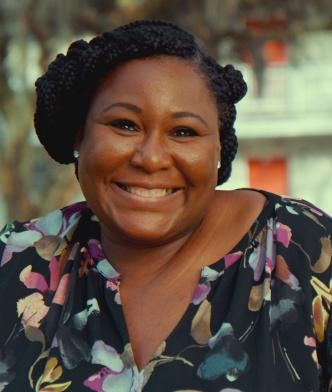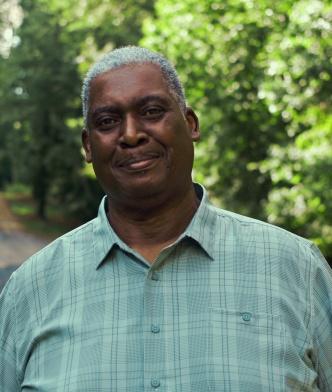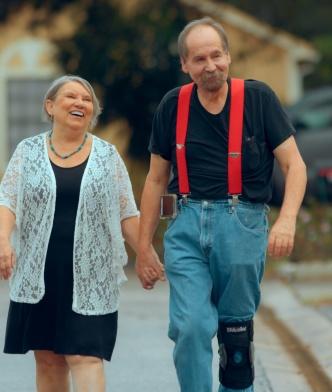- The Fee Is Free Unless You Win®.
- America's Largest Injury Law Firm™
- Protecting Families Since 1988
- 20 Billion+ Won
- 1,000+ Lawyers Nationwide
Free Case Evaluation

The attorneys featured above are licensed in Florida. For a full list of attorneys in your state please visit our attorney page.
Lake County Traffic Accidents
In 2020, Florida had 341,399 traffic accidents involving 569,182 drivers. It's easy to assume the majority of these crashes occurred in big, populous cities. However, that's not totally accurate. Some of the most dangerous areas for drivers are in Central Florida. Lake County traffic accidents accounted for 2,182, despite a lower number of residents than other urban areas. Floridians face additional distinct challenges when compared to other states as we have year-round tourism, which impacts the number of crashes we see on the roadways.
Even though Lake County drivers have seen a dramatic increase in motor vehicle safety and crash defense features in modern cars, traffic accidents continue to occur. Driver error is the most predominant cause of accidents. In fact, statistics from the National Highway Safety Administration (NHSA) show that 94% of crashes are related to driver error. Florida still maintains a position in the top five most dangerous states for drivers. We believe if drivers better understand the dangers of driving in Central Florida, they can make better decisions in an attempt to avoid them. That's why Morgan and Morgan Law Firm has put together this guide on how to steer clear of situations that might put you or others in danger.
Distracted driving - While technology has ushered in an era of transformative automation and communication, it's also created new dangers that never existed before. Having a little computer at hand leads to many situations where a driver can get distracted instead of paying attention to the road. Texting, answering phone calls, or emails may be tempting, but the consequences of distracted driving can be deadly. Florida has now banned drivers from using cell phones to engage in any activity that involves typing characters into a wireless device while behind the wheel.
In the U.S., an estimated 324,652 people were injured in 2020 due to distracted driving, and another 3,142 people were killed. While cell phone usage is a top contender for these accidents, drivers can be guilty of driving while distracted by rummaging for things in a briefcase or purse, eating and drinking, tending to children, changing radio stations, or anything that takes their attention away from driving.
Speeding - Speed limits are established in Lake County to ensure everyone stays safe on the roadways. The primary goal of speed limits is to enhance safety by regulating the risks caused by other drivers' speed choices. When drivers ignore the speed limit, it makes it far more difficult to react to dangers such as hazards on the roadways and other drivers' actions. Considering that 55 MPH is the maximum speed limit on many Lake County roads, a driver could travel 80 feet in just one second. If you see a hazard in the roadway 80 feet in front of you traveling 55 MPH, you would not have the necessary time to react to avoid hitting it. Now add the unpredictability of other drivers to that scenario. If another driver suddenly pulled in front of you and you were speeding, you would likewise not have time to react and avoid rear-ending them.
Failure to obey traffic signs and signals - The roadways were meant for drivers to follow traffic signs and signals. If drivers ignore or miss essential rules, they put themselves and others at risk of injury and property damage. Running a stop sign or red light can cause catastrophic crashes because other drivers will be hit on the side of the vehicle, which has the least reinforcement to prevent injuries. The NHTSA conducted an eight-year study which revealed that red light runners caused 51% of fatalities in crashes at intersections controlled by traffic signals. Another 29% were caused when drivers failed to yield the right of way at traffic signals.
Impaired driving - It's common knowledge that getting behind the wheel while under the influence of drugs or alcohol is extremely dangerous. Still, impaired driving is on the rise. In 2020, the NHTSA reported a 14% increase in drunk driving deaths over 2019. Every day in the U.S., about 32 people die in drunk driving accidents. Even prescription drug use can impact your ability to drive safely. The most infuriating thing about impaired driving is that it is 100% preventable.
Alcohol and drugs reduce a driver's ability to think, reason, multitask, and coordinate movements. All of which are essential for driving. If people planned ahead and designated sober drivers, the danger posed by impaired driving would be reduced significantly.
Weather conditions - Florida is known as the Sunshine State because of the subtropical climate and near year-round sunny skies. However, Florida still has a rainy season that lasts from late spring until October. Because thunderstorms are unpredictable, you might be driving on the highway and experience a sudden downpour. Hazardous debris could be blown onto the road by high winds. Even a small summer shower can cause a decrease in tire traction.
Driving in the rain can impede a driver's situational awareness, and they can experience dangerous decreased visibility. The ability to control the vehicle is diminished. An accident is more likely if a driver doesn't adjust their driving habits to account for the rain. When it's raining, drivers need to reduce their speed, give other drivers a wide berth, and pay close attention to the road.
Teen driving - Traffic accidents are the second leading cause of teen deaths in the U.S. The most at-risk segment is male teens aged 16-19. The odds of teen driver fatalities increase with the presence of other teens or adult passengers and newly licensed teens. One apparent reason is inexperience behind the wheel. Teens are less likely to recognize hazards and dangerous conditions, which can lead to critical errors.
While nighttime driving poses a more serious risk for all drivers, it is particularly so for teen drivers. Likewise, teens are more likely to be involved in fatal crashes on the weekends. Nearly 52% of all teen driving fatalities occurred between Friday, Saturday, and Sunday.
Night driving - Driving at night is something that some people cannot avoid, even though peripheral vision, depth perception, and color recognition is all compromised at night. Nighttime driving is also more dangerous because the glare of oncoming traffic can temporarily blind other drivers. Visibility is decreased to about 500 feet even with high beams on, which significantly reduces reaction time to avoid debris or unexpected movements from other motor vehicles.
Additionally, as we age, our night vision capacity is decreased. A 50-year-old driver may need double the light to see as well as someone half their age. When driving at night, drivers should slow down and minimize outside interference, such as talking to passengers or listening to the radio.
Fatigue - Shockingly, a National Sleep Foundation poll revealed that 37% of drivers have fallen asleep behind the wheel. Of those, 13% admit to falling asleep regularly, and 4% have been at fault for a traffic accident caused by falling asleep. Drowsy driving is akin to driving while under the influence. Studies show that drowsy driving is equal to driving after consuming three beers.
Get answers to commonly asked questions about our legal services and learn how we may assist you with your case.
Morgan & Morgan
Lake County Traffic Accidents: What Should I Do Directly After a Crash?
Although Florida is a no-fault state, there are still steps you can take that may help should you decide to make a claim against the other driver's insurance company. Florida law mandates that vehicle owners carry personal injury protection (PIP) insurance. They also need to carry property damage liability coverage. While this is supposed to cover losses should you be involved in an accident, there still may be a way to sue the other driver if you were not at fault.
For example, suppose you suffered permanent injuries like a traumatic brain injury. In that case, the other driver may be on the hook for negligence. When in doubt, the personal injury lawyers at Morgan and Morgan can clarify if your situation allows you to go outside Florida's no-fault insurance laws. However, you should take these practical steps right after any Lake County traffic accidents:
Call 911 - You may initially be in shock after a traffic accident. This altered mental state can cause reduced awareness and confusion, among other symptoms. You may not realize what happened and be less aware of the injuries you've suffered. Because of this, it's crucial to get the help of first responders. If you're able, move your car off the roadway to minimize further injury and for the safety of others.
When on the phone with 911, give them the location of your accident and inform them of any known injuries. Look for road signs or highway markers to pinpoint the area.
Seek medical care - Even if you get checked over at the scene or refuse medical care, you should still visit your doctor to ensure you're not suffering from any hidden injuries. A hospital setting will have advanced equipment to detect injuries that are not apparent to the eye. Furthermore, medical records are a critical component of any personal injury claim.
Document the accident - If you're able, start making notes about the accident while waiting for police and paramedics to arrive. Take down the other driver's information, such as name, address, license number, and insurance information. If they don't own the car, ask for the owner's information as well. Get the contact information of any witnesses and responding officers.
Take photos and video of the accident scene prior to moving your vehicle off the road, if possible, including any damage to either vehicle. If there are eyewitnesses, ask them to record their statements while the details are vivid in their minds. You can also request to record the other driver. If they make any statements alluding to fault, you may be able to use this evidence later.
File a police report - Not all car crashes warrant a call to 911, such as in the case of a minor fender bender. However, a hit and run, a collision due to negligence, or an incident with an impaired driver should always be reported. It's always best to file a police report as soon after the accident as possible.
Contact Morgan and Morgan's Personal Injury Lawyers
While many people handle car insurance claims on their own, particularly because of Florida's no-fault insurance law, you may encounter problems with your own insurance company. Suppose they are lowballing your insurance payout, or you have been seriously injured, and your PIP won't begin to cover your medical bills. In that case, a personal injury attorney can help to protect your rights and secure the compensation you'll need to get your life back on track.
If you think Florida's no-fault insurance law means you can't sue an at-fault driver, think again. Our results show that we don't back down from a fight when we know our client has suffered significant injuries. We make sure they get the funds they need to set them up for the future.
Our fee is free unless we win. Contact us today for your free case evaluation.
In The Community
We’re dedicated to the cities and towns we call home. Discover the local Morgan & Morgan experience with news, events, and partnerships.
How it works
It's easy to get started.
The Fee Is Free Unless You Win®.
Results may vary depending on your particular facts and legal circumstances.
Step 1
Submit
your claimWith a free case evaluation, submitting your case is easy with Morgan & Morgan.
Step 2
We take
actionOur dedicated team gets to work investigating your claim.
Step 3
We fight
for youIf we take on the case, our team fights to get you the results you deserve.






